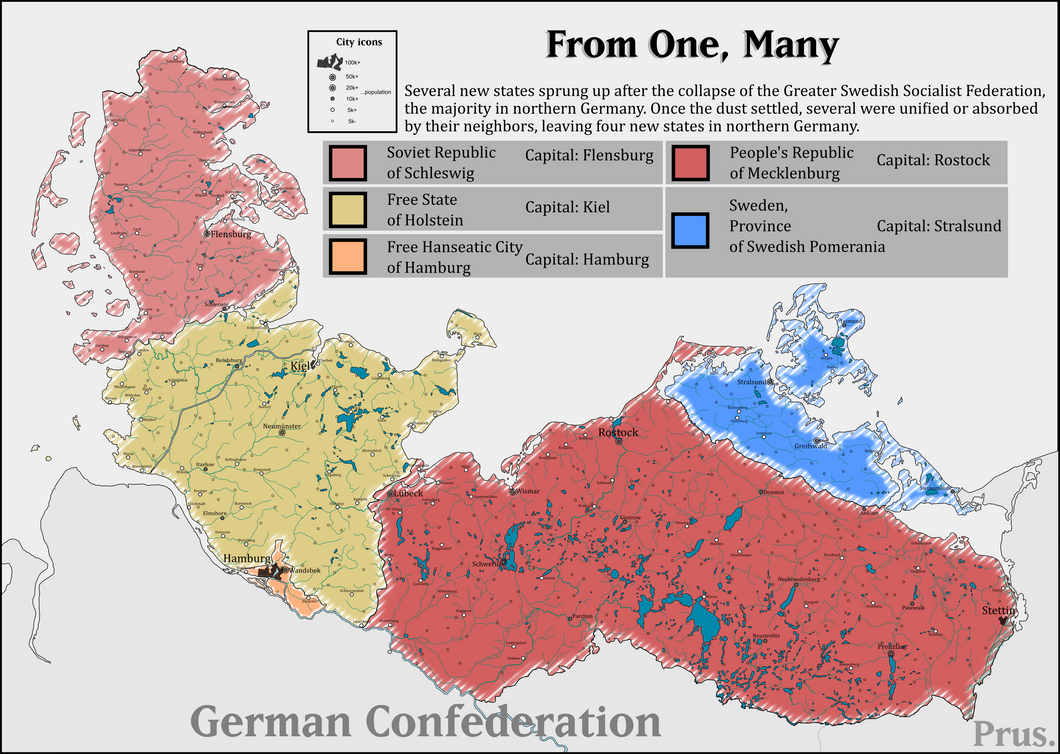The swift invasion by the People's Army has shattered the ROK Armed Forces into disarray, marching through the city after city without facing fierce resistance. The United Nations Command, despite their massive firepower, has failed to recuperate their losses in a significant manner; able to reclaim some of the coastal cities from the south but unable to reclaim back the lands after a failed counterattack.
After years of skirmishes and air raids, an armistice was ratified in 1954 and eventually progressed to a peace deal in 1956. The gains made by the communist are recognized as their own while acknowledging the sovereignty of the remaining territories of the republic. Since then, the two remained in an uneasy coexistence and they begin to establish a robust economic relation.
The PDRK has become the most militarized society on earth, with an ideology that synthesizes the Marxist-Leninist ideologies with a militaristic flair. They eventually reformed its economic system to encourage economic development, albeit still retaining their protectionist policy. Most of the companies are state-owned, with their initiative directly decided by the executive power. Their abundant supply of minerals has made them economically powerful, albeit most of them are spent on the integrity of their military and totalitarian-esque infrastructure.
Life in the People's Republic was simple and grey, with nothing but archaic circuses and military parades to amuse them. People are fed themselves with coupons provided by the governments but the diversity of their dietary are few due to their policy of quasi-autarky.
The Republic of Korea, with the massive port of Pusan and smart allocation of resources, has developed the rural landscapes of the coast into a massive megalopolis - an endless stream of skyscrapers illuminated with a bluish glow. Described as a paradise by westerners, many have migrated to the city and provide their talents for the benefit of the republic, turning the once monolithic country into a diverse community. Despite being economically prosperous, the signs of inequality have risen from its deep underbelly, with many living under squalor.
As time passes, the republic eventually recognized the futility of uniting with their northern neighbors and eventually developed their own identity. Despite this, they were able to coexist in peace, forming economic and diplomatic relations in end.
Here's an alternate link for the sake of it: [DeviantArt]|[r/ImaginaryMap]
Very nice! The map is positively superb, although I wonder if the ROK would still be so successful if it were as small as TTL. Unless, of course, the success described is more of an illusion than a fact.
I also wonder if the DPRK would have still pursued Songun when they have all of Korea's traditional capitals and (presumably) more international recognition.




